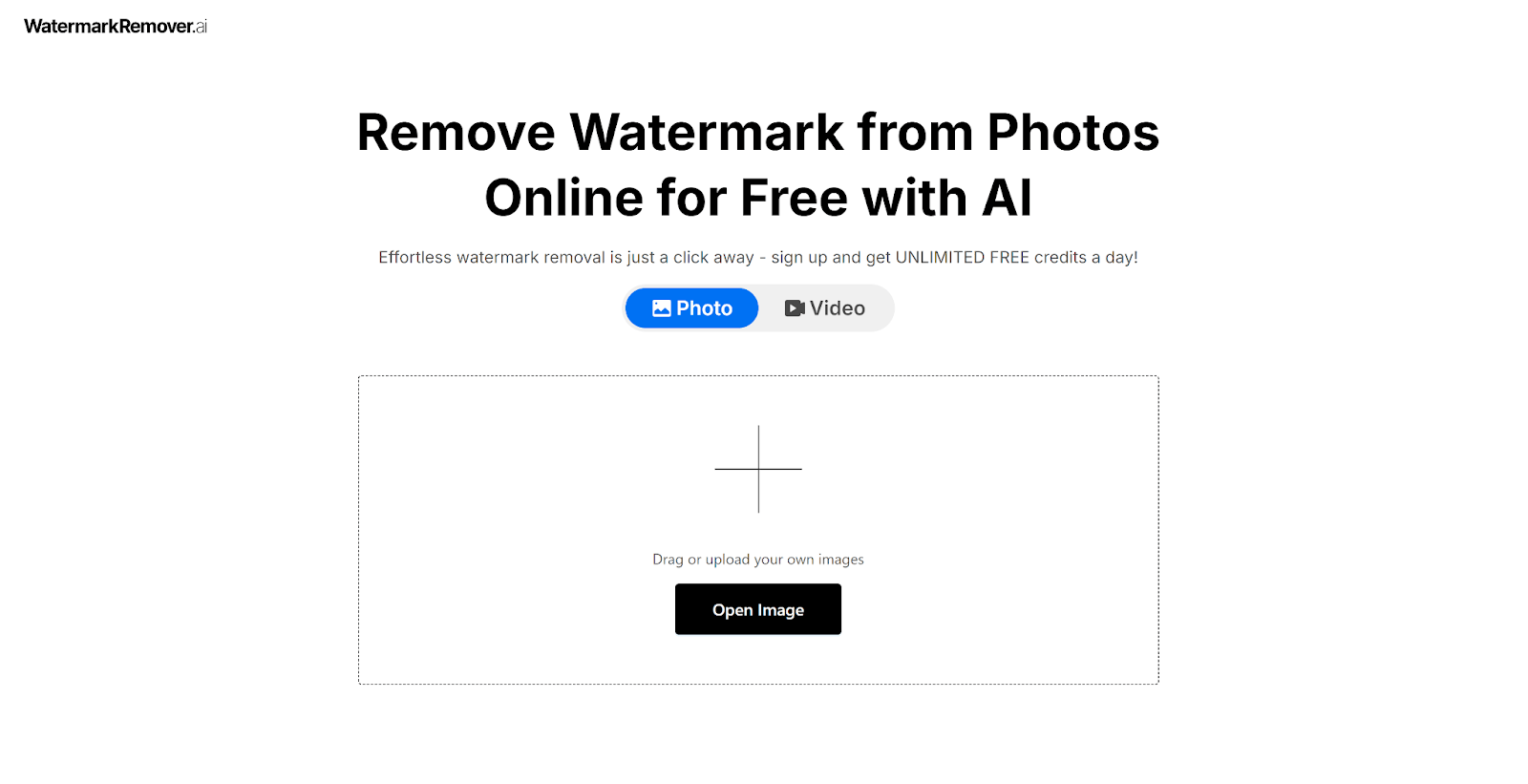Watermarks are commonly used to protect intellectual property and indicate ownership of images. While their primary purpose is to prevent unauthorized use, there are situations where removing a watermark becomes necessary. For example, you may need to clean up personal photos or restore historical images for archival purposes. Fortunately, advanced online tools like Watermark Remover make this task straightforward and efficient. This guide will walk you through the process of removing watermarks from photos using this tool, as well as other general techniques for watermark removal.
Understanding Watermarks and Their Purpose

What is a Watermark?
A watermark is a recognizable image or text that is embedded into a photograph or other digital media to assert ownership or copyright. Watermarks can vary widely in design, ranging from subtle semi-transparent text to more prominent logos or graphic overlays.
Why Remove Watermarks?
While watermarks serve an important protective function, there are legitimate reasons for their removal. Users may wish to:
- Clean Up Personal Photos: Remove watermarks from personal images to make them look more polished for printing or sharing.
- Restore Historical Images: Eliminate modern watermarks from historical or archival photographs to preserve their original appearance.
- Prepare Marketing Materials: Remove watermarks from stock images that were used for proofing purposes but are now intended for final use.
How to Use WatermarkRemover.ai for Watermark Removal
Step 1: Access Watermark Remover
Watermark Remover is an effective tool for removing watermarks from images. It utilizes advanced artificial intelligence algorithms to identify and eliminate watermarks while preserving the underlying image quality. The platform offers a user-friendly interface, making the process accessible even for those with minimal technical experience.
Step 2: Upload Your Image
To start, users need to upload the image from which they want to remove the watermark. WatermarkRemover.ai supports various image formats, including JPG, JPEG, PNG, BMP, and TIFF. Simply drag and drop your file onto the upload area or use the “Upload Image” button to select your file.
Step 3: Select and Remove Watermark
Once the image is uploaded, WatermarkRemover.ai will automatically detect watermarks within the image. Users can highlight the area of the watermark if needed. The tool’s AI algorithms then work to remove the watermark and fill in the area with surrounding pixels, ensuring a seamless appearance. This process typically takes only a few seconds.
Step 4: Preview and Download
After the watermark is removed, users can preview the edited image to ensure that the removal was successful and the quality of the photo is intact. If satisfied with the results, download the updated image to your device. WatermarkRemover.ai also allows users to perform batch processing, making it easy to handle multiple images at once.
Alternative Methods for Watermark Removal

Manual Editing with Photo Editing Software
For those who prefer a more hands-on approach, photo editing software such as Adobe Photoshop or GIMP can be used to manually remove watermarks. This method involves:
- Selecting the Watermark Area: Use tools like the lasso or marquee tool to select the watermark.
- Content-Aware Fill or Clone Stamp: Apply content-aware fill or clone stamp tools to cover the selected area with surrounding pixels.
- Refining the Image: Use additional editing tools to blend and refine the area to make the removal less noticeable.
Using Other Online Tools
Aside from WatermarkRemover.ai, there are several other online tools available for watermark removal, each with its own set of features:
- Inpaint: An online tool that allows users to remove unwanted objects from images, including watermarks.
- Fotor: A versatile online photo editor that offers watermark removal features among its editing options.
- Photopea: A free, web-based photo editor that provides advanced editing tools similar to Adobe Photoshop.
Tips for Effective Watermark Removal
Choose the Right Tool
The effectiveness of watermark removal can vary depending on the tool used. WatermarkRemover.ai stands out for its AI-driven approach, which can automatically handle different types of watermarks with minimal user intervention.
Ensure Image Quality
To achieve the best results, start with the highest quality version of your image. Higher resolution images allow for more precise watermark removal and better overall results.
Avoid Overuse
Frequent or improper removal of watermarks from copyrighted images can lead to legal issues. Always ensure that you have the right to modify the image and avoid using removed watermarks for commercial purposes unless explicitly authorized.
Regular Backups
Before making changes to your images, especially when using manual methods, it’s advisable to keep a backup of the original files. This precaution helps prevent accidental loss of data or quality during the editing process.
Conclusion
Removing watermarks from photos can enhance the visual appeal of images and is sometimes necessary for various legitimate purposes. Tools like WatermarkRemover.ai offer a streamlined and effective solution for this task, leveraging AI technology to deliver high-quality results with minimal effort. By following the steps outlined in this guide, users can efficiently remove watermarks and restore their images to a clean, polished state. Whether opting for automated tools or manual editing methods, the key is to choose the right approach based on the specific needs and quality requirements of the project.
⸻ Author Bio ⸻

Sharjeel Amjad is a Pakistani-American entrepreneur, SEO specialist & content Writer. With over 4 years of exceptional experience in marketing content strategies, I have consistently demonstrated my expertise and accomplishments in the field. My experience in writing digital marketing on strategy development, AI, Technology, social media marketing, content creation, SEO optimization, email marketing, PPC campaigns, analytics, and website management.












